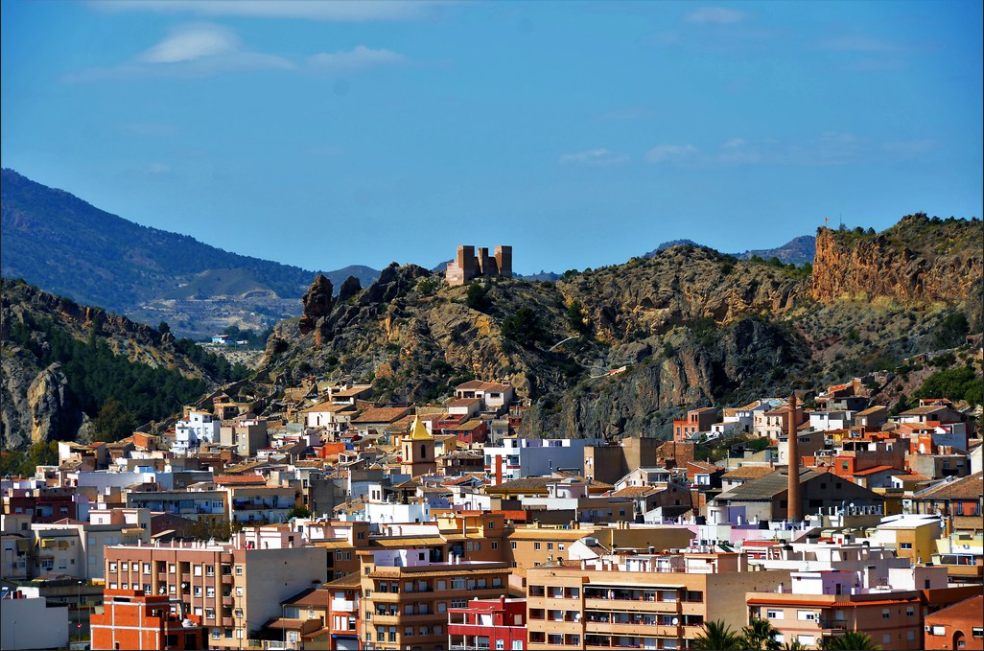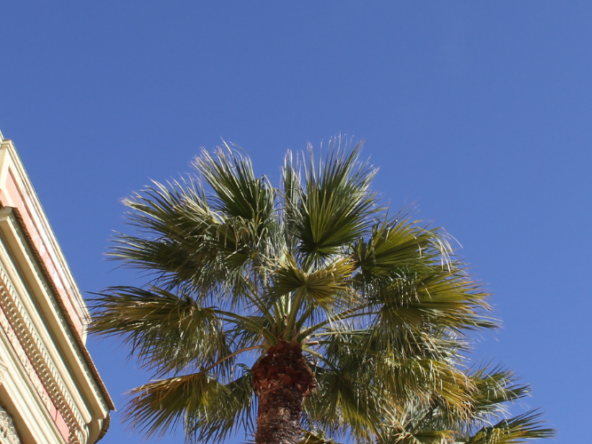
The Ricote Valley is located to the north of Murcia, covering an area of 144 m2, some 30 kilometres from the capital of Murcia. Located in the middle basin of the Segura river, it is a very fertile area, surrounded by cliffs and with an abundance of palm trees and fruit trees.
The valley is also known by the name of Moorish valley, due to the fact that the territory in which it is located was the last stronghold of the Arabs before the Reconquest. Its rich Moorish past is reflected not only in its beautiful buildings, but also in the natural environment that surrounds the valley.
Visitors who come to the Ricote Valley to discover its beautiful scenery will have the opportunity to visit attractive spots and marvellous villages full of charm, as well as to live unforgettable experiences and enjoy the exquisite gastronomy of the area. Also, if you are planning a visit to the Ricote Valley, you can take a look at all the rural houses in the region of Murcia that we have available.
What to see in the Ricote Valley
Abarán
The municipality of Abarán belongs to the Vega Alta del Segura, and in its municipal area you can find mountain ranges such as the Sierra del Oro or the Sierra de la Pila.
In this town we can contemplate the Church of San Pablo, the Hermitage of San Cosme and San Damián, the Sanctuary of the Virgen del Oro and the Old Bridge, declared an Asset of Cultural Interest. It is also worth mentioning that in Abarán we will find the Route of the “Norias” (waterwheels) which date back to Arab times and which were used to raise the water to higher areas and thus easily irrigate both banks of the river.
Within the municipal boundaries of the town we can visit the Jarrai Dam.
As far as gastronomy is concerned, in Abarán we cannot miss the exquisite ratatouille, the most typical dish of the local gastronomy. As for sweets, the so-called “picardías”, a very tasty hazelnut caramel, or the “condenados”, a dessert for which the local confectioners keep the recipe with great care.
Blanca
Blanca is a municipality that sits on a large volcanic rock, known as Peña Negra. It is located in the region of Vega Alta del Segura.
It has a very extensive and valuable historical heritage, with a multitude of works, including the Arab Castle, the Church of San Juan Evangelista, the Hermitage of San Roque, the Casa La Favorita and the waterwheel Miguelico Núñez.
In the area surrounding the town we can also see a host of attractive spots, such as the El Azud reservoir, the Alto de Bayna viewpoint, the Parque de las Cuevas or the El Arenal river beach.
Despite being a small municipality, it has a wide cultural offer, and in it we can visit the Museum of the Murcian painter Pedro Cano, the National Centre of Video Art, the IDOL Art Centre, the Museum and Art Centre of Blanca or the Museum and Interpretation Centre of Light and Water.
The sausages, honey and homemade ice creams are very typical. As far as handicrafts are concerned, the municipality stands out for its esparto grass carpets.
Cieza
Cieza is a municipality that is also located in the heart of the Vega Alta del Segura region, of which it is the capital. Its territory combines steep mountain ranges, such as those of El Puerto and El Picarcho, with wide plains on which gentle hills rise.
This town also has a rich architectural legacy, including the Basilica of Nuestra Señora de la Asunción, the Sanctuary of Buen Suceso, the Convent of the Poor Clares, the Convent of San Joaquín and San Pascual, the Chapel of San Bartolomé and the Mirador del Muro viewpoint.
Its cultural offer is very extensive, and it is home to numerous museums and art galleries, such as the Centro de Interpretación del Esparto and its industry, the “Molino de Teodoro” Museum, the Casa-Museo de la Semana Santa, the art gallery “Casa Efe Serrano” or the Siyasa Museum. The latter exhibits objects that form part of man’s existence in Cieza from prehistoric times onwards. Inside you can see life-size reconstructions of medieval houses.
Nearby we will find protected areas of great scenic value, such as the Almadenes Canyon, as well as archaeological sites such as Medina Siyasa, which preserves the remains of the ancient Andalusian city of the same name, and which is located in the Cerro del Castillo, having been declared an Asset of Cultural Interest.
Among the many festivals that take place in Cieza throughout the year, the one known as La Floración (The Flowering) stands out. Its aim is to celebrate the beautiful spectacle offered by the fruit trees when they blossom. It takes place, as is logical, just as spring is about to begin, and during this fiesta a host of activities take place, such as concerts, hiking, exhibitions, conferences, poetry, photography and even boat trips down the Segura river.
Peaches, “tortas de pan dormío”, split olives seasoned with fennel and salt, as well as hazelnut horchata are very typical.
Ojós
Ojós is a Murcian municipality belonging to the judicial district of Cieza. It was founded by the Romans, who located it on the cliff of the famous Salto de la Novia, a beautiful spot with a waterfall that has a sad and tragic legend. The town is located next to the so-called Estrecho del Solvente, next to the Segura river and surrounded by orchards.
Amongst the works of art that Ojós possesses are the Church of San Agustín, the Pila de la Reina Mora and various emblazoned houses.
The municipality is noted for its numerous hydraulic works, including hydroelectric power stations, pumping stations, irrigation channels and reservoirs, the latter including the Azud and the Mayés Dam. This has led to the municipality being considered a “Living Museum of Water”.
As far as gastronomy is concerned, the town has a variety of typical dishes, including rice with rabbit, porridge, migas (fried breadcrumbs) and snails. And, as for desserts, there are bizcochos borrachos (sponge cakes), quince jelly, jams, San Blas rolls and the “Monte Nevao” sweet.
Ricote
Ricote is a small municipality located, like the previous ones, in the valley of the same name.
Here we can admire works such as the Church of San Sebastián, the Castle of Alharbona, the Casa de la Encomienda, the Palacete de los Álvarez-Castellanos, the Convent of San Diego, the Hermitage of Charrara or the ruins of the old Hermitage of Nuestra Señora de las Huertas. Nor should we fail to visit the so-called “Jardín de Celestino”, a pretty corner with benches from which we can contemplate the beautiful surroundings.
The typical dishes of Ricote include roast lamb and suckling pig. Its wine is also very outstanding. We can also buy beautiful handicrafts.
Archena
If we want to make a route through the Ricote valley it is advisable to start in Archena, located on the banks of the Segura river, as in this municipality we will find an interesting Interpretation Centre of the valley, located in a historic building, the Palacete del Parque Villa Rías. The Church of San Juan Bautista and the Castle of Don Mario are also part of the municipality’s legacy.
We must not forget its famous Spa, built in the 19th century, although it is equipped with the most modern facilities. Inside is the Casino and the Sanctuary of the Virgen de la Salud.
It is highly recommended that you take a stroll or cycle along the banks of the river.
We must bear in mind that Archena’s sausages are very prestigious, and as for sweets, the cuernos de merengue and petisús are very typical. The latter are hollow pastries filled with cream or custard.
Ulea
Ulea is a town located on the slopes of the mountainous ridge of the Ricote valley. It is a pretty municipality, surrounded by palm trees and lemon groves. It has two population centres, Ulea and Venta Puñales.
In Ulea we can see the works that form part of its legacy, such as the Casa del Cura, also known as Casa Parisina, or the Templete del Henchidor or the Church of San Bartolomé. We must not miss the place known as “El Gurugú”, which offers an attractive view of the Murcian huerta surrounded by a Moorish landscape.
Villanueva del Rio Segura
This municipality is the gateway to the valley if we come from the south. Its historical heritage includes the Palacete de Doña Isabel, the Church of Nuestra Señora de la Asunción, the Asilo Hospital de Santa Isabel and the Hermitage of San Roque. It also has several viewpoints, such as that of Corazón de Jesús or that of Calle Cuna.
The gastronomy of this municipality is made up of dishes such as wheat stew, rice with rabbit, pork stew and rice with beans. As for its sweets, paparajotes are very typical.
Route of the Viewpoints
In the Ricote valley there are many viewpoints, which allow us to enjoy spectacular panoramic views. A good option for the traveller who approaches this valley is to follow an attractive route, known as the Route of the Viewpoints, which allows us to contemplate unforgettable scenery.

